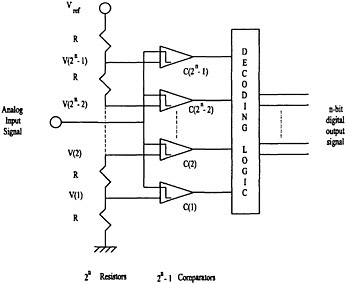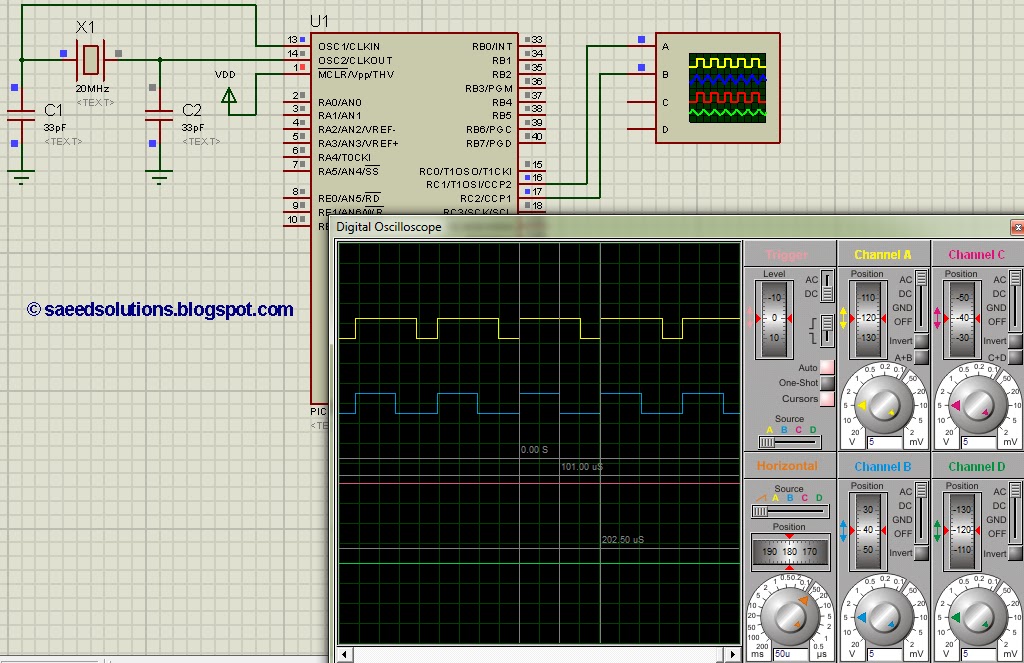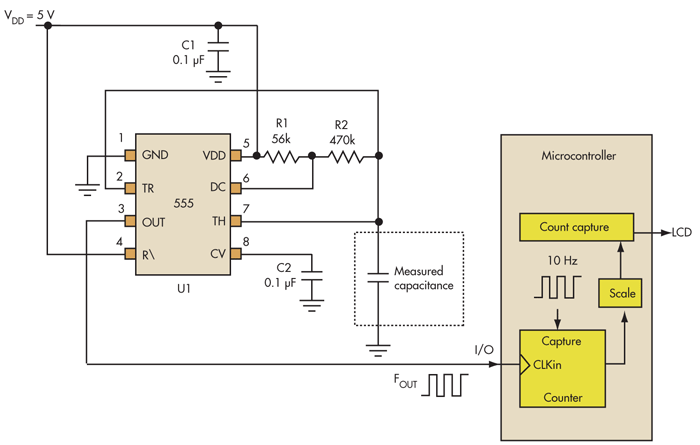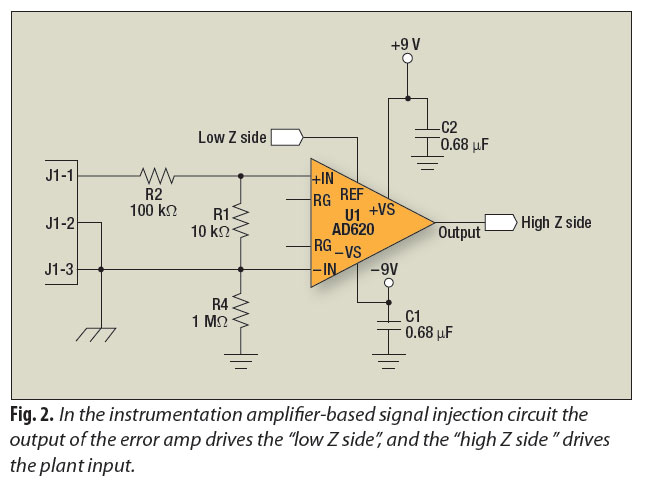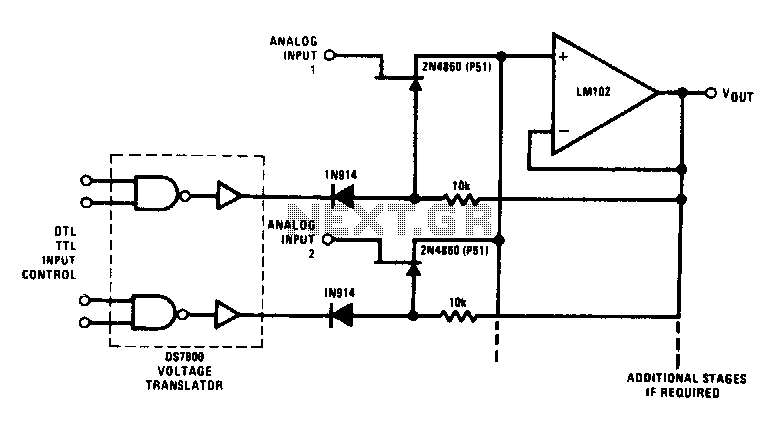
Analog Simulation Tools Aid Digital-Control-Circuit Designers
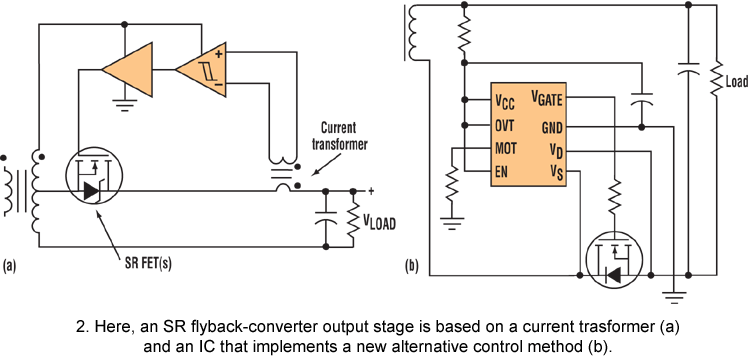
Although analog and digital controllers may seem vastly different, their principles of operation are often quite similar. Therefore, popular analog tools like Spice can still be utilized to enhance common digital proportional-integral controllers through analysis, without the need for extensive mathematical computations or expensive specialized software. To provide readers with a practical view of these advantages, a digital infrared controller was developed. The PIC microcontroller drives current through an infrared emitter using its pulse-width modulator and measures the sensor voltage with its analog-to-digital converter. The article details the simulation of the infrared controller through the use of Spice. Among the topics covered are the voltage-controlled voltage source, which acts as an ideal operational amplifier that can simulate the controller simply by adding resistors and capacitors. Also discussed is the execution of the proportional-integral algorithm in Visual Basic. Detailed Spice results are provided. A closed-loop controller's function is to maintain a desired response despite system changes and disturbances. An infrared controller was developed for this article to guide the reader through the analog simulation of a digital circuit. One of the most popular programs for simulating analog circuits is Spice, thanks to decades of validated operation and ease of access. An analog equivalent of the digital infrared controller executing the proportional-integral algorithm is provided to illustrate the simulation. The algorithm is executed through a PC in Visual Basic for development ease because it is faster and easier than generating firmware. Spice results for various parameters were determined for the example digital controller. For instance, the loop gain showed a 3.25-Hz bandwidth and a 72.3° phase margin. The values were calculated automatically by the postprocessor in the evaluation version of Intusoft Spice. Also calculated was the transient step response, which matched the hardware measurement that was achieved earlier. Digital controllers offer many advantages over their analog counterparts, including reduced parts count, greater flexibility, and ease of modification. However, in the transition from analog to digital, decades of valuable knowledge have often been disregarded. Numerous articles discuss analyzing analog circuits to optimize bandwidth and stability margin, while many others focus on tuning digital controllers through trial-and-error approaches, which frequently results in suboptimal performance. Nevertheless, transforming a system into its most fundamental elements for simulation presents many benefits. A greater intuitive understanding can be gained through both transformation and simulation processes. Users of various software can share results, increasing the availability of tools and application assistance. Errors are less likely to go undetected when calculations are performed by multiple methods and compared. Enhanced optimization concerning performance, robustness, and parts selection is achievable with this improved understanding and tool availability. Most importantly, decades of useful knowledge can be leveraged to benefit new and emerging technologies, which is essential for continued growth. Although analog and digital controllers may appear vastly different, their principles of operation are often quite similar. Therefore, popular analog tools like Spice can still be utilized to enhance common digital proportional-integral (PI) controllers through analysis, without the need for extensive mathematical computations or expensive specialized software. Merging proven analog and digital technologies may achieve the best of both worlds.
The design and simulation of the digital infrared controller involve a comprehensive approach that utilizes both analog and digital methodologies, highlighting the synergy between the two. The PIC microcontroller serves as the core component, effectively managing the infrared emitter's operation through pulse-width modulation (PWM). This modulation technique allows for precise control of the emitter's output, which is crucial for applications requiring accurate infrared signal generation.
The analog-to-digital converter (ADC) within the PIC microcontroller plays a pivotal role by converting the analog voltage from the infrared sensor into a digital signal that the microcontroller can process. This conversion is essential for feedback in the closed-loop control system, enabling the controller to make real-time adjustments based on the sensor readings.
The use of Spice for simulating the controller's behavior allows for the modeling of various circuit elements, including the voltage-controlled voltage source that simulates the operational amplifier. By incorporating resistors and capacitors, the simulation can accurately reflect the dynamics of the actual circuit, providing valuable insights into performance metrics such as bandwidth and phase margin.
The implementation of the proportional-integral algorithm in Visual Basic facilitates a user-friendly interface for simulation and analysis. This software environment allows for rapid prototyping and testing of control algorithms, reducing development time compared to traditional firmware programming.
The results obtained from the Spice simulation, including the loop gain and transient step response, provide a benchmark for evaluating the performance of the digital controller against the physical hardware. The alignment of simulation results with actual measurements underscores the reliability of the Spice model and its effectiveness in predicting circuit behavior.
In conclusion, the integration of analog simulation tools like Spice into the design of digital controllers not only enhances understanding and optimization but also preserves the wealth of knowledge accumulated over decades in analog circuit design. This approach fosters innovation in the development of digital control systems, ensuring that the benefits of both analog and digital technologies can be fully realized.Although analog and digital controllers may appear vastly different, their principles of operation are usually quite similar. Therefore, popular analog tools like Spice can still be used to benefit common digital proportional-integral controllers through analysis without spending hours on complex math or a fortune on specialized software.
To give readers a hands-on view of these benefits, a digital infrared controller was developed. The PIC MCU drives current through an infrared emitter with its pulse-width modulator and measures the sensor voltage with its analog-to-digital converter. The article details the simulation of the IR controller through the use of Spice. Among the topics covered are the voltage-controlled voltage source, which is essentially an ideal op amp that can simulate the controller simply by adding resistors and capacitors.
Also discussed is execution of the proportional-integral algorithm in Visual Basic. Detailed Spice results are provided. A closed-loop controller`s function is to maintain a desired response despite system changes and disturbances. An infrared controller was developed for this article to guide the reader through the analog simulation of a digital circuit.
One of the most popular programs for simulating analog circuits is Spice, thanks to decades of validated operation and ease of access. An analog equivalent of the digital infrared controller executing the proportional-integral algorithm is provided to illustrate the simulation.
The algorithm is executed through a PC in Visual Basic for development ease because it`s faster and easier than generating firmware. Spice results for various parameters were determined for the example digital controller. For instance, the loop gain showed a 3. 25-Hz bandwidth and 72. 3 ° phase margin. The values were calculated automatically by the postprocessor in the evaluation version of Intusoft Spice.
Also calculated was the transient step response, which matched the hardware measurement that was reached earlier. Digital controllers stack up many benefits over their analog counterparts, including reduced parts count, greater flexibility, and ease of modification.
In the transition from analog to digital, however, decades of useful knowledge have been cast aside. Countless articles on record talk about analyzing analog circuits to optimize bandwidth and stability margin. Just as many articles get into the tuning of digital controllers through trial-and-error approaches, which often results in less-than-optimal performance.
But transforming a system into its most fundamental elements for simulation has many advantages. Greater intuitive understanding is achieved through both transformation and simulation processes. Many people using varied software can share results, making more tools and application assistance available. Errors are less likely to go undetected when calculations are performed by multiple methods and then compared.
Better optimization with respect to performance, robustness, and parts selection is possible with this enhanced understanding and availability of tools. Most importantly, decades of useful knowledge are put to work to benefit new and emerging technologies, which is essential for continued growth.
Although analog and digital controllers may appear vastly different, their principles of operation are usually quite similar. Therefore, popular analog tools like Spice can still be used to benefit common digital proportional-integral (PI) controllers through analysis, without spending hours on complex math or a fortune on specialized software.
Merging proven analog and digital technologies may achieve the best of both worlds. Here are ten benefits of analog simulation for digital circuits: The goal of a closed-loop controller is to maintain a desired response despite system changes and disturbances. Typical examples include heater temperature, motor speed, light intensity, and 🔗 External reference
The design and simulation of the digital infrared controller involve a comprehensive approach that utilizes both analog and digital methodologies, highlighting the synergy between the two. The PIC microcontroller serves as the core component, effectively managing the infrared emitter's operation through pulse-width modulation (PWM). This modulation technique allows for precise control of the emitter's output, which is crucial for applications requiring accurate infrared signal generation.
The analog-to-digital converter (ADC) within the PIC microcontroller plays a pivotal role by converting the analog voltage from the infrared sensor into a digital signal that the microcontroller can process. This conversion is essential for feedback in the closed-loop control system, enabling the controller to make real-time adjustments based on the sensor readings.
The use of Spice for simulating the controller's behavior allows for the modeling of various circuit elements, including the voltage-controlled voltage source that simulates the operational amplifier. By incorporating resistors and capacitors, the simulation can accurately reflect the dynamics of the actual circuit, providing valuable insights into performance metrics such as bandwidth and phase margin.
The implementation of the proportional-integral algorithm in Visual Basic facilitates a user-friendly interface for simulation and analysis. This software environment allows for rapid prototyping and testing of control algorithms, reducing development time compared to traditional firmware programming.
The results obtained from the Spice simulation, including the loop gain and transient step response, provide a benchmark for evaluating the performance of the digital controller against the physical hardware. The alignment of simulation results with actual measurements underscores the reliability of the Spice model and its effectiveness in predicting circuit behavior.
In conclusion, the integration of analog simulation tools like Spice into the design of digital controllers not only enhances understanding and optimization but also preserves the wealth of knowledge accumulated over decades in analog circuit design. This approach fosters innovation in the development of digital control systems, ensuring that the benefits of both analog and digital technologies can be fully realized.Although analog and digital controllers may appear vastly different, their principles of operation are usually quite similar. Therefore, popular analog tools like Spice can still be used to benefit common digital proportional-integral controllers through analysis without spending hours on complex math or a fortune on specialized software.
To give readers a hands-on view of these benefits, a digital infrared controller was developed. The PIC MCU drives current through an infrared emitter with its pulse-width modulator and measures the sensor voltage with its analog-to-digital converter. The article details the simulation of the IR controller through the use of Spice. Among the topics covered are the voltage-controlled voltage source, which is essentially an ideal op amp that can simulate the controller simply by adding resistors and capacitors.
Also discussed is execution of the proportional-integral algorithm in Visual Basic. Detailed Spice results are provided. A closed-loop controller`s function is to maintain a desired response despite system changes and disturbances. An infrared controller was developed for this article to guide the reader through the analog simulation of a digital circuit.
One of the most popular programs for simulating analog circuits is Spice, thanks to decades of validated operation and ease of access. An analog equivalent of the digital infrared controller executing the proportional-integral algorithm is provided to illustrate the simulation.
The algorithm is executed through a PC in Visual Basic for development ease because it`s faster and easier than generating firmware. Spice results for various parameters were determined for the example digital controller. For instance, the loop gain showed a 3. 25-Hz bandwidth and 72. 3 ° phase margin. The values were calculated automatically by the postprocessor in the evaluation version of Intusoft Spice.
Also calculated was the transient step response, which matched the hardware measurement that was reached earlier. Digital controllers stack up many benefits over their analog counterparts, including reduced parts count, greater flexibility, and ease of modification.
In the transition from analog to digital, however, decades of useful knowledge have been cast aside. Countless articles on record talk about analyzing analog circuits to optimize bandwidth and stability margin. Just as many articles get into the tuning of digital controllers through trial-and-error approaches, which often results in less-than-optimal performance.
But transforming a system into its most fundamental elements for simulation has many advantages. Greater intuitive understanding is achieved through both transformation and simulation processes. Many people using varied software can share results, making more tools and application assistance available. Errors are less likely to go undetected when calculations are performed by multiple methods and then compared.
Better optimization with respect to performance, robustness, and parts selection is possible with this enhanced understanding and availability of tools. Most importantly, decades of useful knowledge are put to work to benefit new and emerging technologies, which is essential for continued growth.
Although analog and digital controllers may appear vastly different, their principles of operation are usually quite similar. Therefore, popular analog tools like Spice can still be used to benefit common digital proportional-integral (PI) controllers through analysis, without spending hours on complex math or a fortune on specialized software.
Merging proven analog and digital technologies may achieve the best of both worlds. Here are ten benefits of analog simulation for digital circuits: The goal of a closed-loop controller is to maintain a desired response despite system changes and disturbances. Typical examples include heater temperature, motor speed, light intensity, and 🔗 External reference
Warning: include(partials/cookie-banner.php): Failed to open stream: Permission denied in /var/www/html/nextgr/view-circuit.php on line 713
Warning: include(): Failed opening 'partials/cookie-banner.php' for inclusion (include_path='.:/usr/share/php') in /var/www/html/nextgr/view-circuit.php on line 713
